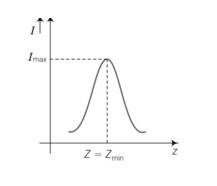Alternating Current
Get insights from 92 questions on Alternating Current, answered by students, alumni, and experts. You may also ask and answer any question you like about Alternating Current
Follow Ask QuestionQuestions
Discussions
Active Users
Followers
New answer posted
4 months agoContributor-Level 10
This is a multiple choice answer as classified in NCERT Exemplar
(a, d) inductive reactance XL= 2 L


As frequency (ν) increases, Z decreases and at certain value of frequency know as resonant frequency (ν0), impedance Z is minimum that is Zmin= R current varies inversely with impedance and at Zmin current is maximum.
New answer posted
4 months agoContributor-Level 10
This is a multiple choice answer as classified in NCERT Exemplar
Secondary voltage Vs= 24V
Power associated with secondary Ps = 12W
Is= = 12/24= 0.5A
I0= Is = 1/ A
New answer posted
4 months agoContributor-Level 10
This is a multiple choice answer as classified in NCERT Exemplar
Average power dissipated is ErmsIrmscos
Z=
= =
Irms= 6/ A
cos =R/Z=2/
pav= 6 = 14.4W
New answer posted
4 months agoContributor-Level 10
This is a multiple choice answer as classified in NCERT Exemplar
(c) As we know that Q= to make Q high R should be low, L should be high and C should be low.
New answer posted
4 months agoContributor-Level 10
This is a multiple choice answer as classified in NCERT Exemplar
As we know resonant frequency is v0=
To increase capacitance we must connect it to another capacitor parallel to the first.
New answer posted
4 months agoContributor-Level 10
This is a multiple choice answer as classified in NCERT Exemplar
(c) The voltmeter connected to AC Mains reads mean value (
New answer posted
4 months agoContributor-Level 10
This is a multiple choice answer as classified in NCERT Exemplar
(c) For delivering maximum power from the generator to the load, total internal reactance must be equal to conjugate of total external reactance.
XL=-Xg
New answer posted
4 months agoContributor-Level 10
This is a multiple choice answer as classified in NCERT Exemplar
(b) I0= Irms= (5)A
I=I0sinwt = 5 sin = 5 A
New answer posted
4 months agoContributor-Level 10
This is a short answer type question as classified in NCERT Exemplar
An inductor opposes flow of current through it by developing a back emf according to Lenz's law. The induced voltage has a polarity so as to maintain the current at its present value. If the current is decreasing, the polarity of the induced emf will be so as to increase the current and vice -versa.
Since, the induced emf is proportional to the rate of change of current, it will provide greater reactance to the flow of current if the rate of change is faster, i.e., if the frequency is higher. The reactance of an inductor, therefore, is proportional to the frequency. Mat
New answer posted
4 months agoContributor-Level 10
This is a short answer type question as classified in NCERT Exemplar
A capacitor does not allow flow of direct current through it as the resistance across the gap is infinite. When an alternating voltage is applied across the capacitor plates, the plates are alternately charged and discharged. The current through the capacitor is a result of this changing voltage (or charge).
Thus, a capacitor will pass more current through it if the voltage is changing at a faster rate, i.e. if the frequency of supply is higher. This implies that the reactance offered by a capacitor is less with increasing frequency.
Mathematically, the reactance can be
Taking an Exam? Selecting a College?
Get authentic answers from experts, students and alumni that you won't find anywhere else
Sign Up on ShikshaOn Shiksha, get access to
- 65k Colleges
- 1.2k Exams
- 687k Reviews
- 1800k Answers
